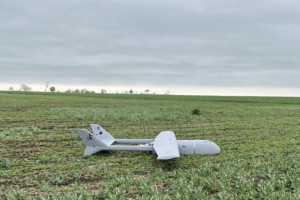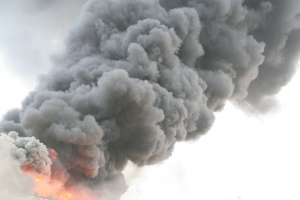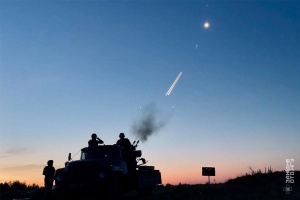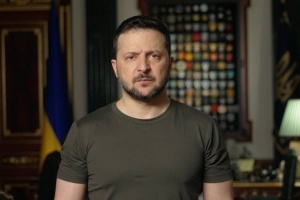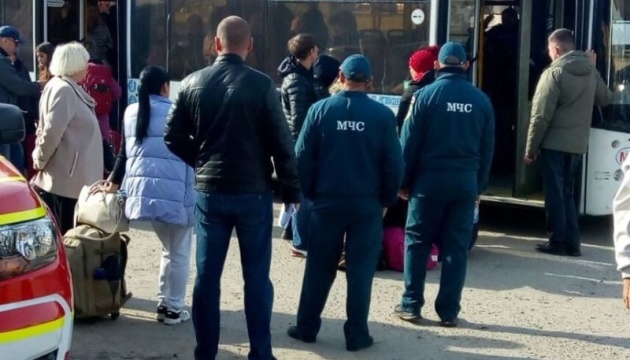
Deportation, not evacuation. Why Kremlin pursues forcible displacement of population from Kherson region
Rumors have been circulating since at least the end of September, but collaborators dismissed them claiming that “there is no panic” and “there will be no evacuation.” But already on October 18, the head of the Russian occupation administration, Vladimir Saldo, announced it, referring to the threat of “shelling by the AFU” and a “strike on the Kakhovska HPP.”
The next morning, residents of Kherson and the region received an SMS calling for evacuation due to the alleged “shelling” plotted by Ukraine. On the same day, Russian President Vladimir Putin declared martial law in four newly occupied regions, and Saldo announced a seven-day ban on entering the right-bank part of the Kherson region due to the “tense situation” at the front.
But is it possible to call the movement of the population organized by the occupiers an evacuation? From the perspective of international humanitarian law — it’s not. The actions of Russians against the civilian population have all the signs of deportation. The Center for Strategic Communication and Information Security explains what exactly is happening in the Kherson region.
Why isn’t this an evacuation?
Art. 49 of the Fourth Geneva Convention provides for the possibility of evacuation of civilians by the occupying power only within the occupied territory (exceptions are allowed only in cases where this cannot be ensured due to material causes) and provided that the evacuees return home after the end of hostilities. That is, evacuation is a temporary measure, the purpose of which is to protect the civilian population from hostilities. Russia violates both of the above-mentioned requirements of the Convention:
● Residents of the Kherson region are taken out of the region: first to Dzhankoi in the occupied Crimea, and from there — to the Krasnodar, Stavropol Krais and to other regions of Russia.
● Russia does not plan to return the displaced population home: the “evacuees” are promised the “right to choose” a new place of residence in Russia and to receive “housing certificates.”
In addition, according to the Convention, Russia is obliged to inform Ukraine about the movement of its citizens. But, of course, the Russians “do not resort” to this.
So, this is not about evacuation, but about deportation — eviction from the place of permanent residence.
Why do Russians deport Ukrainians from the occupied part of Kherson region?
We are definitely not talking about any humanist considerations. Since the end of February, the occupiers have not allowed to organize a single “green corridor” in the Kherson region to evacuate civilians and deliver medicines, food, and other humanitarian goods. The Russians shot several evacuation columns, killing children and adults.
Today, the mass displacement of the population from the occupied territory allows Russians to solve several tasks at the same time:
● The Russian military can use civilian Ukrainians as a human shield. Transport corridors across the Dnipro are under fire control of the Armed Forces of Ukraine. Therefore, the displacement of civilians from right bank to left bank is used both to disguise military logistics and to protect them from Ukrainian artillery;
● The announcement of “evacuation” legalizes the massive facts of violation of the property and human rights of the “enemy” occupied population. People are deprived of the opportunity to manage their fate and make long-term plans. Property that one cannot take during the eviction will be looted or appropriated by the occupiers.
● Forced to retreat, the aggressors resort to the scorched earth tactics, aiming to leave the devastated, plundered, and depopulated land to the liberators.
● Deportations serve the purposes of Russia’s demographic policy. The population of the temporarily occupied territories is considered by Moscow as a trophy and a resource that can be pumped out of Ukraine. The deportees are moved to remote depressed regions of Russia, often dividing their families and preventing them from forming compact groups, thus integrating them into Russian society. The approach has already been tested in the Donbas.
● Instead, the families of Russian military, special services and civilian specialists are encouraged to move to the occupied territories, which Moscow plans to keep. The latter are motivated by double salaries and other forms of material incentives. Putin signed the relevant decree on October 17, just before the announcement of the “evacuation.” The new “Kherson residents” occupy the housing of Ukrainians who are forced to leave their homes.
The massive forced displacement of Ukrainians from the right to the left (Moscow-controlled) bank of the Dnipro has a sad precedent in the late 17th and early 18th centuries, called the “Great Deportation.” Even though the modern deportation takes place in entirely different historic conditions, the title can be applied to the crimes of the Russian occupation administration in the Kherson region as well.
How many Ukrainians did Russians manage to deport?
It is difficult to answer this question since the occupiers and collaborators cite dubious figures. Saldo discussed the plans to displace 60,000 people from the Kherson region, and even reported about “15,000 evacuees in two days.” Considering that it took four passages across the Dnipro with the help of boats and ferries, ensuring such indicators was problematic at least.
On October 28, the collaborators reported on the “completion of organized evacuation,” without citing the number of people displaced.
Head of the Crimean occupation administration Sergey Aksyonov stated in October that 5,000 Kherson children will be “hosted” on the peninsula, allegedly “for health improvement.” It should be noted that the displacement of children from Kherson region to Crimea began in the summer. But they were not sent home “for safety reasons.” Instead, their parents were “generously” allowed to visit them.
According to the Crimean Tatar Mejlis representative Eskender Beriyev, 1,939 children from Kherson and Zaporizhia regions stayed on the peninsula at the end of October, with the occupiers planning to place them in local schools. Most of these children have parents who have stayed on the “mainland.”
The displacement of children and the actual blackmail aimed at forcing their parents to move to the occupied Crimea and Russia testifies to the Kremlin’s interest in changing the ethnic composition of the population of both the occupied territories and regions of Russia. The Putin regime will try to turn the deported Ukrainians into Russians. The Kremlin has a special hope in the “re-education” of Ukrainian children. This is evidenced not only by Putin’s statements about the “one people,” but also by the confessions of other war criminals, including so-called “children’s ombudsman” Maria Lvova-Belova. She boasted how children kidnapped from Mariupol “learn to love Russia.”
Thus, the deportation of the civilian population from the occupied part of Kherson region is another war crime of Russia. The Russians see the population of the occupied territories exclusively as a resource that can be used for their own benefit. Therefore, only the expulsion of the occupiers will put an end to the abduction of children, other violations of rights and save the lives of Ukrainian citizens. Ukraine will also make every effort to bring the deportees back to their homeland and reunite families.
Center for Strategic Communication and Information Security

